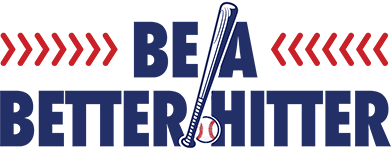Hitting Focal Point
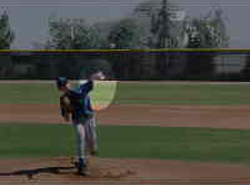
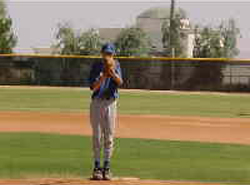 I find it interesting that so many coaches and parents are quick to change this and alter that when it comes to a young player’s hitting. Young players are advised to open their stance, close their stance, keep their elbow up, keep their elbow down, squash the bug, don’t squash the bug, keep their head in there, and on and on and on. In reality, to make a significant change in a player’s stance or hitting habits takes a tremendous amount of time and effort on both the coach and the player’s part.
I find it interesting that so many coaches and parents are quick to change this and alter that when it comes to a young player’s hitting. Young players are advised to open their stance, close their stance, keep their elbow up, keep their elbow down, squash the bug, don’t squash the bug, keep their head in there, and on and on and on. In reality, to make a significant change in a player’s stance or hitting habits takes a tremendous amount of time and effort on both the coach and the player’s part.
I have found that as long as a young player has somewhat proper mechanics, that there is nothing glaringly wrong that may develop into a long-term mechanical flaw, the best way to “repair” inconsistency at the plate is to insure the player is “seeing” the ball properly. A famous quote from Pete Rose is “see the ball, hit the ball”. Well, if you can’t see it . . . you can’t hit it. Most kids with good hand-eye coordination will hit the ball with some consistency as long as they are able to see it. The trouble is most kids are never taught the best way to see what they are supposed to hit.
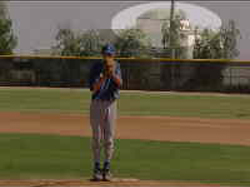 The human eye is such that it focuses on the nearest object. A common flaw in well meaning parents and coaches is to instruct the hitter to concentrate on the release window (the point where the pitcher is likely to release the ball). Unfortunately, if a hitter is looking into that window when the ball is not there his eyes will automatically focus on the next closest object. That object may be a tree beyond the center field fence, a house or a mountain far, far away. Then . . . when the pitcher’s hand gets to the window and releases the ball the eye has to refocus back to the release window and then to the ball which is streaking toward the plate. The result is lost time and inconsistency in reading the speed of the incoming pitch. The eyes are playing catch up to the object they are trying to “track”.
The human eye is such that it focuses on the nearest object. A common flaw in well meaning parents and coaches is to instruct the hitter to concentrate on the release window (the point where the pitcher is likely to release the ball). Unfortunately, if a hitter is looking into that window when the ball is not there his eyes will automatically focus on the next closest object. That object may be a tree beyond the center field fence, a house or a mountain far, far away. Then . . . when the pitcher’s hand gets to the window and releases the ball the eye has to refocus back to the release window and then to the ball which is streaking toward the plate. The result is lost time and inconsistency in reading the speed of the incoming pitch. The eyes are playing catch up to the object they are trying to “track”.
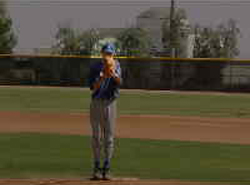 The proper instruction is to have the hitter focusing on some part of the pitcher’s body, his cap,chest or forehead. In doing so the player has established the proper focal point for his eyes. The proper distance is established for the initial stages of the tracking process. As the player winds upand begins to deliver the pitch, the hitter shifts his focus into the release window with the proper timing (as the hand enters the release window) and immediately focuses on the ball. This split-
The proper instruction is to have the hitter focusing on some part of the pitcher’s body, his cap,chest or forehead. In doing so the player has established the proper focal point for his eyes. The proper distance is established for the initial stages of the tracking process. As the player winds upand begins to deliver the pitch, the hitter shifts his focus into the release window with the proper timing (as the hand enters the release window) and immediately focuses on the ball. This split- second difference in “tracking” the ball with the eyes results in a significant improvement in pitch recognition and translates to greater consistency in contact.
second difference in “tracking” the ball with the eyes results in a significant improvement in pitch recognition and translates to greater consistency in contact.
Often you hear great hitters remark that they are “really seeing 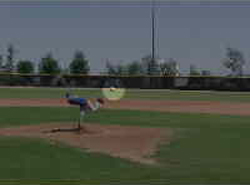 the ball well right now,” or “the ball just looks big to me right now.” This is from the proper tracking technique combined with perfect timing in the shift from the pitcher’s body part to the release window. There is no doubt that seeing the ball well has a direct correlation to great performance at the plate.
the ball well right now,” or “the ball just looks big to me right now.” This is from the proper tracking technique combined with perfect timing in the shift from the pitcher’s body part to the release window. There is no doubt that seeing the ball well has a direct correlation to great performance at the plate.
Coaches, the next time you see a little struggle taking place at the plate by your hitter, refrain from the normal adjustments with the stance and swing mechanics. Instead, take your hitter aside and ask where he is looking at prior to the pitch. Some proper instruction on the focal point can go along way to helping him to be a better hitter!
